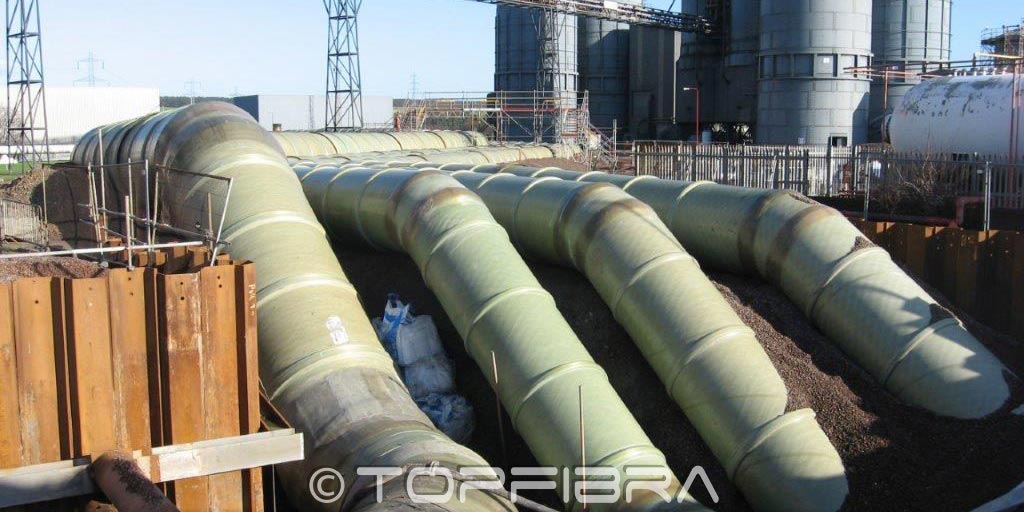There are several reasons why GRP pipes are very competitive nowadays.
This material should be considered whenever piping is about to be replaced or a new project is implemented.
It is important that the engineers involved in specifying or designing GRP pipes have a clear understanding of their properties and characteristics.
A good start emerges talking about the immediate benefits that a GRP offers due to its nature:
- Excellent chemical and electrochemical resistance as well as its stability at high temperatures are definitely better than those of other plastic materials in general.
- Corrosion resistance against a wide range of fluids, on both the interior and exterior pipe walls.
- Low-cost maintenance is a feature associated with GRP pipes because they do not suffer the corrosive attack that the metallic systems do.
- The abrasion resistance of GRP is excellent due to the high surface toughness of resins. It can even be improved for special applications.
- Excellent impact strength due to its composite structure. The inclusion of fibrous reinforcements prevents the spreading of cracks. Moreover, if the impact is too high, the transparent nature of the material enables small defects to be detected visually, with consequent steps to be taken for repair, replacement, or acceptance in case of minor damage.
- Lightweight construction is another major benefit. The weight of a typical GRP pipe is 25 % of the weight of a comparable steel pipe and about 10 % of a comparable concrete pipe. Thus, due to the lightweight construction, the costs of shipping, handling, and long-haul transport are significantly lower.
- No electrical conductivity and consequently better electrical properties than its steel counterparts. However, if the project requires that the GRP pipe has electrical conductivity, it is possible to include conducting fibers into the wall of the structure.
- GRP pipes are easier to clean and they have a very smooth flowing surface. Hydraulic calculations can be done with the formula taking into account the absolute roughness of the pipe wall, such as the formula of Colebrook.
- GRP pipes are available with different jointing systems, either welding or using adhesives or with mechanical systems using spigot and socket (bell) joints or sleeves with elastomeric sealing gaskets. Moreover, the filament winding technology enables mechanical jointing systems (lock joints) which, by means of a suitable locking device, ensure axial continuity of the pipeline and eliminate the risk of detachment of the joints and the need for anchoring blocks for lines under pressure.
- Highly adaptable to complex shapes, much more than conventional materials.

